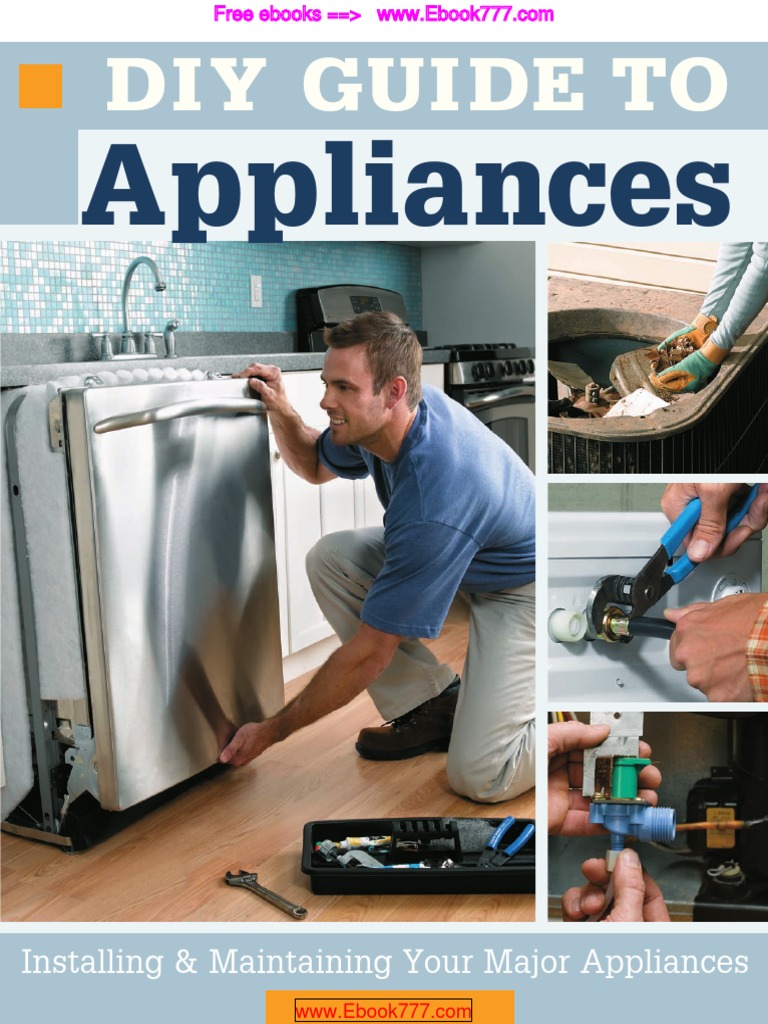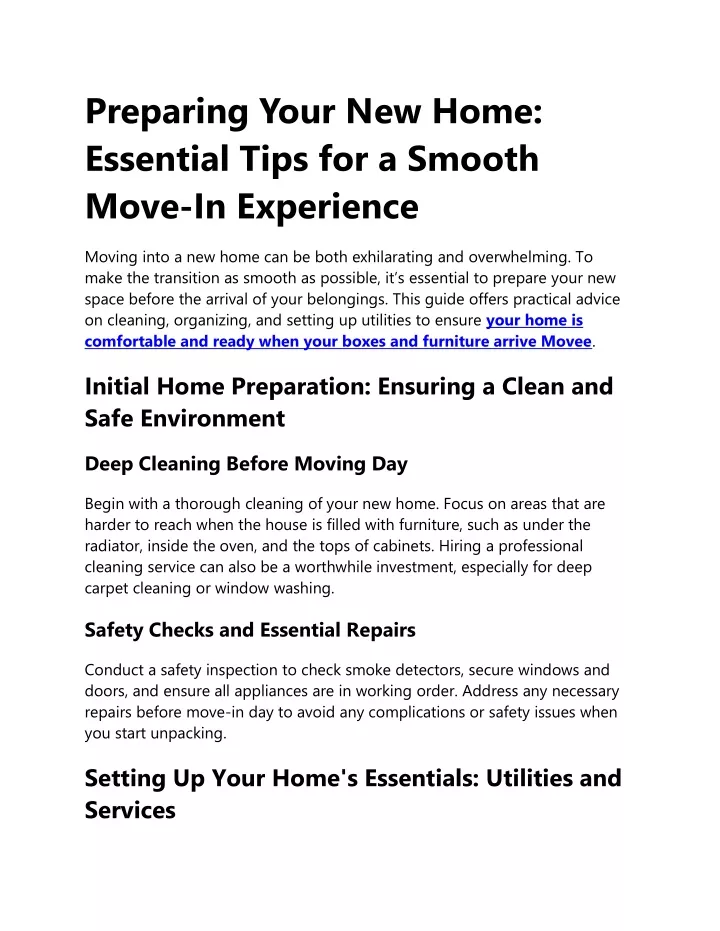

Preparing your home for major appliance installation is a crucial step towards seamless integration and efficient operation of your new appliances. A well-prepared home ensures a smooth installation process, prevents potential issues, and maximizes the functionality of the new appliances. However, improper preparation can lead to delays, damage, and even safety hazards. This comprehensive guide will walk you through the essential steps for preparing your home for the installation of your new major appliances, covering everything from electrical and plumbing considerations to space preparation and safety precautions. This guide offers a detailed overview, outlining the key steps for a successful and trouble-free installation. We’ll look at essential preparations including electrical and plumbing checks, space assessments, and safety precautions.
Electrical and Plumbing Considerations
Evaluating Existing Infrastructure
Before ordering new appliances, thoroughly assess the existing electrical and plumbing systems in your home. An electrician can inspect the electrical wiring capacity to make sure it can handle the additional load of new appliances, and a plumber can evaluate the plumbing lines to ensure adequate capacity and compatibility with new appliances. This preliminary step prevents significant issues down the line. For example, an improperly sized circuit can lead to problems with electrical surges or even tripping breakers during use, costing extra money in the future.
Necessary Upgrades
If your home’s infrastructure isn’t adequately equipped for new major appliances, upgrading the electrical and plumbing systems may be necessary. Consider the wattage of the new appliance and ensure the circuit breaker can handle it. Hiring qualified professionals for these tasks is crucial for preventing potential safety hazards and ensuring proper functionality. If you have concerns about water pressure or sufficient water flow, consult a plumber.
Ensuring Safety
Electrical connections should be double-checked before installation. Look for any signs of damage or wear and tear. Properly grounded outlets are essential. Improper wiring can cause electrical shocks or fires. Never attempt DIY electrical work. A qualified electrician can assess the existing electrical setup and plan for necessary adjustments to accommodate your new appliances.
Space Assessment and Preparation
Measuring and Planning
Before purchasing appliances, meticulously measure the available space in your kitchen, laundry room, or other areas where new appliances will be installed. This prevents issues when the appliance is delivered, and you realize that it won’t fit. Incorrect measurements can lead to costly replacements and delays, impacting your budget and schedule. For example, a misplaced washer or dryer can impact laundry efficiency and workflow.
Preparing the Installation Area
Clearing the Area
Clear the area designated for the new appliance installation entirely. Remove any items that might obstruct access or interfere with the installation process. This includes furniture, boxes, and other belongings. Thorough cleaning of the area ensures a clean workspace for the installers.
Safety Precautions
Disconnecting Utilities
Disconnect the electricity supply to the area where the appliance will be installed before any work begins. Always verify the power is completely off. This is a critical safety measure to prevent electric shocks or other mishaps. Always consult your appliance manuals for specific instructions on disconnecting utilities, which will differ from product to product.
Protecting Surfaces
Protect the surfaces around the installation area with protective covers or drop cloths. This prevents damage to flooring, walls, and countertops, which can often become scratched or marred during the appliance installation procedure. Keep these materials on hand for effective surface protection.
Professional Installation
Hiring Qualified Professionals
For complex appliance installations, especially those involving electrical or plumbing work, it is advisable to hire qualified appliance installers. They are familiar with the specific equipment and safety procedures necessary to install your appliances properly and safely. This minimizes risks and ensures proper functionality. For example, hiring installers with experience in commercial-grade appliances can solve complex plumbing or ventilation issues.
Understanding Installation Process
Review the manufacturer’s instructions carefully. This often includes details on proper setup, connection requirements, and potential issues. Appliance installation involves more than just placing the appliance in the designated area.
Post-Installation Checklist
Verifying Functionality
After the appliance installation is complete, thoroughly check its functionality. This may include testing various features and functions to ensure that the appliance is working as intended. This step is critical for avoiding further problems.
Reviewing Local Regulations
Compliance with Guidelines
Be sure to check the local regulations that may pertain to appliance installation, regarding permitted changes, and required safety standards. Compliance with these regulations is essential for avoiding potential penalties and ensuring your safety.
Documentation and Maintenance
Storing Manuals
Keep all manuals for your new appliances in a safe place. These manuals contain valuable information regarding appliance operation, maintenance, and troubleshooting steps. The manuals are essential for reference when you need to know how to operate your appliances or address problems. These manuals also contain valuable information related to warranty details.
Budgeting and Scheduling
Estimating Costs
Accurately estimate the costs associated with appliance installation. This includes labor costs, material expenses, and potential fees for necessary upgrades. Budgeting thoroughly for appliance installation can help prevent cost overruns.
Scheduling Installation
Schedule appliance installation during convenient times. Ensure that the chosen date and time don’t conflict with other important commitments. Adequate scheduling is crucial for smooth workflow.
Preparing for any unforeseen delays
Be ready for any unforeseen circumstances, such as material delays, and other factors that can cause delays during installation.
Frequently Asked Questions
Q1: What are the critical safety precautions I should take during appliance installation?
A1: Appliance installation demands utmost care and attention to safety. Prioritize power disconnection and secure the area. Ensure all electrical connections are appropriately made by a qualified electrician, to prevent any electrical hazards. Also, be mindful of proper lifting techniques, and avoid overloading outlets or electrical circuits, which can lead to potential fire risks. Never work alone during appliance installation, and if you encounter any uncertainty, seek help from professionals.
In conclusion, preparing your home for new major appliance installation is a crucial step in ensuring a smooth and successful transition. By following these steps, you can avoid potential problems, ensure a safe installation, and maximize the functionality of your new appliances. Remember to prioritize safety, plan ahead, and don’t hesitate to seek professional help when needed. Now that you’re prepared, contact your appliance dealer for scheduling your installation appointment! You can also refer to relevant local regulations for any further clarification.